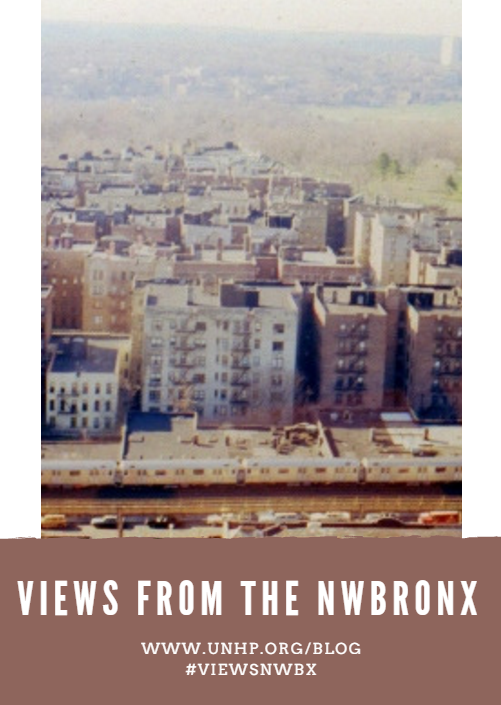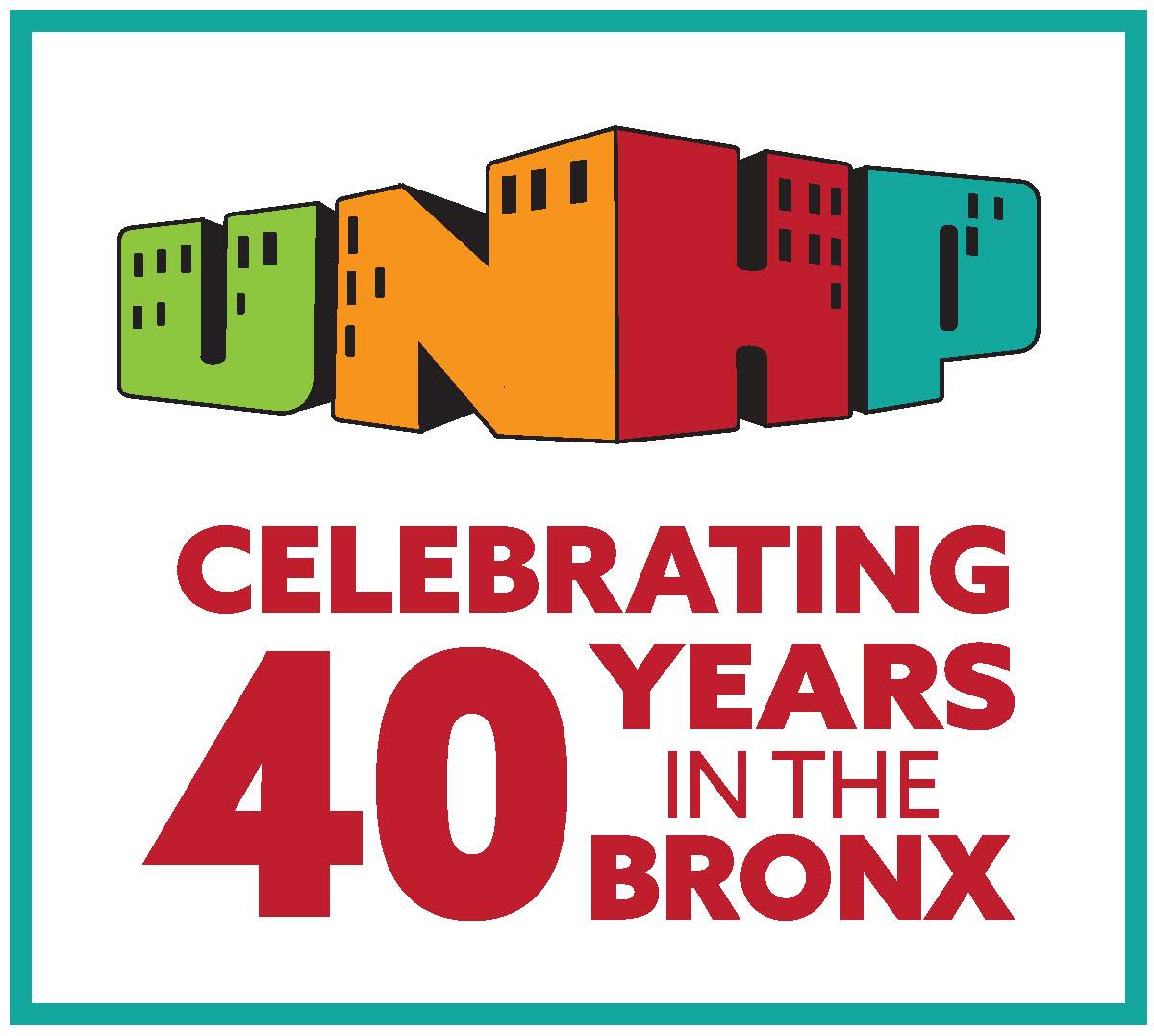Summary Post // Views from the Northwest Bronx
Views from the Northwest Bronx is a blog series aimed at framing an inclusive and informed discussion on issues affecting the affordability and viability of Northwest Bronx neighborhoods today. While the topics addressed in the series are by no means exhaustive, the data presented and analysis offered sheds light on many of the key issues.
Community is the Operative Word in ‘Community Development’ highlights the history of community development in the Bronx, which offers many important lessons on the crucial importance of the deep involvement of community members in charting a path forward for their own communities. Community leaders and groups saved the Bronx at a time when it was abandoned by both the private and public sector. Early community development was community-initiated and -led. Community development groups were key partners in the creation of housing and services in the Bronx. However, current development is occurring without the same level of leadership and input from community development groups. As a result, the same sensitivity to local neighborhood concerns is lacking.
Appraisals and Affordability: The Wilton uses the story of two buildings in the Northwest Bronx to illustrate the potentially perverse nature of appraisals. The quality and condition of multifamily housing should be key factors in assessing their value; they’re often not. Appraisals should not only be based on the potential value of the property. The prevailing norms of appraising seem to give more weight to assessed value based on comparable sales prices. Appraisals based on recently overvalued properties and questionable net income projections can have a major impact on rental prices, ownership incentives, and housing affordability.
.jpg)
In Keep the “Homeless” at Home, John M. Reilly—Executive Director of Fordham Bedford Housing Corporation—addresses the preemptive actions that must be taken to prevent people from becoming displaced or homeless in the first place. It is important to address the role that the reduction in Section 8 vouchers and the loss of the advantage program played in the increases in NYC homelessness. Consistent, reliable and sufficient rental subsidies to enable low-income families to remain housed is critical. Most NYC affordable housing is in privately-owned rent stabilized apartments – protecting the shrinking number of affordable units with enforced rent regulations is essential and a tenant-complaint system is not enough.
New Policy, Old Issue: Homelessness & the Concentration of Poverty reacts to Mayor Bill de Blasio’s plan for tackling the rise of homelessness in New York City. Poverty has been concentrating in Bronx neighborhoods for many years, with the average income of new Bronx dwellers lower than the poor residents that already live here. The siting of facilities for the homeless occurs at a disproportionately high level in the Bronx and some programs incentivize landlords to place homeless families over other low-income families. The City artificially drives rent up in the Bronx by taking units offline and reducing the pool of affordable housing, thereby worsening the affordability crisis. The post points to disingenuous and misleading data as a barrier to transparency, and calls for the City to further clarify their plan to address homelessness, especially as it relates to closing cluster sites in the Bronx. If cluster sites are converted to shelters, it will both further concentrate poverty in our community and exacerbate the scarcity of affordable housing by taking rent stabilized apartments off the market. We call for a more inclusive strategic plan that protects low-income Bronx families, rent-stabilized apartments and develops homeless housing based on fair share principles.
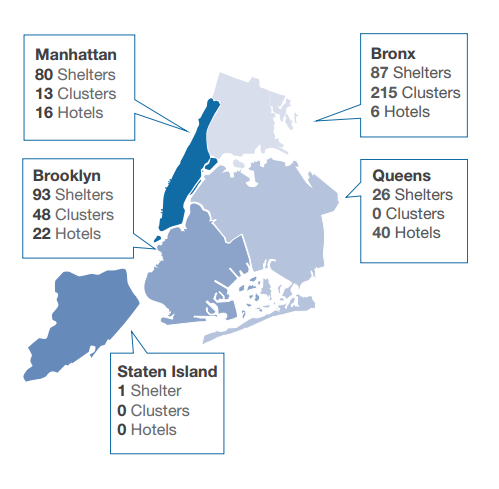
Transparency, Trust, and ‘Turning the Tide on Homelessness’ offers further reflections on the Mayor’s plan. A lack of sufficient engagement with communities on the City’s part nurtures a lack of trust among communities that feel overburdened with homeless housing. An implication of the Mayor’s policy to house the homeless in their community of origin will be that low-income neighborhoods will receive far more shelters than other, wealthier neighborhoods. Implementing data-driven Fair Share policies requires good data and currently there are not mechanisms in place for the public to monitor unfair placement practices or evaluate purported need and equitable distribution. The Department of Homeless Services furnishes insufficient, inconsistent, and unclear data, which makes it very difficult to glean useful insights. The need to create and preserve affordable housing has to be met while addressing the rising number of homeless individuals and families. To do that, the City has to overcome a lack of trust that has developed over a long period of time. Sharing accurate, accessible, and clear data is an important step. Engaging the community in the planning process is equally important. And that engagement needs to start before the all-but-final siting decisions have been made.
In Nothing About Us, Without Us, is For Us, Sheila Garcia—Deputy Director at Community Action for Safe Apartments (CASA)—addresses the Jerome Avenue rezoning and articulates a vision for an approach to rezoning that includes creating a collaborative planning process with neighborhood residents who represent different interests. It is CASA’s belief that a community-run and community-led visioning process will develop leaders and build the community power and solidarity necessary to push through a wide range of policies to ensure our communities benefit from changes coming to the Bronx. Further, rezoning should be guided by four principles: real affordable housing, real community engagement, union jobs and local hire, and strong anti-harassment and anti-displacement policies.
In Understanding the Unique Needs of a Community, Judi Kende—Vice President and New York Market Leader for Enterprise Community Partners, Inc.—echoes the belief that community-based groups are important partners in community development, largely because they understand the community and its issues better than anyone else. Community-based Organizations (CBO’s) are in a unique position to advocate for policy changes that limit concentrated poverty, such as more equitable distribution of shelter sites around the city and stronger measures to keep people in their homes and out of the shelter system altogether. Strong partnerships with community-based groups will yield long-term success.
6.2M BIP Data Points; More Needed to Improve NYC Rental Housing highlights the UNHP Building Indicator Project (BIP), a database that leverages public data to gauge distress. BIP currently captures demographic data, housing and building code violations, and several city liens from municipal agencies for over 62,000 properties with five units or more in all five boroughs—amounting to staggering 6.2 million data points. This is a tool that proactively identifies problem buildings. The nature of multifamily ownership and lending is transforming in New York City. Regulatory measures need to account for the rise in unregulated non-traditional lenders, foreign investment, and private equity in the multi-family real estate market. These entities provide financing and are not constrained by the same regulatory restraints as traditional lenders. Unsurprisingly, more accessible data is required to bolster proactive tools like BIP. UNHP is concerned that there are many reasons that may hinder a tenant from making a complaint to 311 and seeks to complement a complaint-driven system with an increased emphasis on proactive code enforcement with roof-to-cellar inspections made in buildings identified as at-risk.
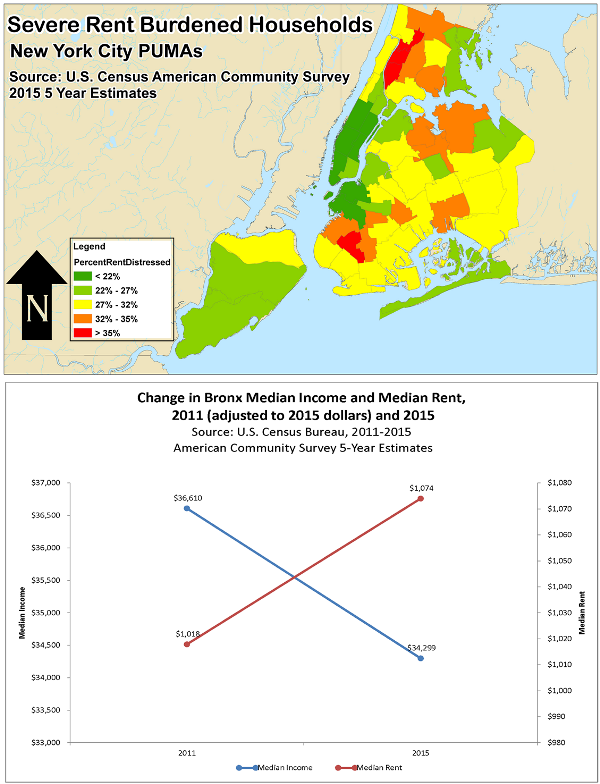
Is the Bronx Building? Look for Yourself shows in unqualified terms that it is. The level of demolition and building in Community Board 7 alone is unprecedented. Who is doing the building, what income levels the units are for, and what will happen on the lots left by smaller demolished buildings is not clear. Will this building boom push higher income families into the Bronx and trigger gentrification? Will it further concentrate poverty? Coordination and community involvement seem to be missing. Although this trend seems to be part of certain City and State agencies’ plans, is it part of a Bronx-centered plan? Will it benefit the Bronx? This development will bring many new households to the Northwest Bronx: what is being planned for the transportation, health, and educational needs of these new households? Supportive housing is being built in the Bronx, is it benefiting the community and how can Bronx families access these developments for family members in need?
Preferential Rents: Benefit or Threat? The use of preferential rents—negotiated rents that are less than the legal rent— has become more prominent recently as an issue for tenants, in the news, and in Bronx set-up sheets for multi-family building sales. What started as a tool for helping people stay in their housing at affordable rents was hijacked in the middle of the Albany night by the real estate industry and has become a weapon against preserving housing through rent stabilization. Preferential rents, even though they are less than the legal rent, are not always affordable to low-income tenants and the size of the increases are unpredictable. The increasing prevalence of preferential rents could undermine the financial stability of multifamily buildings and its lenders as well as threaten the tenancy of Bronx residents—70 percent of whom are already vulnerable to displacement.
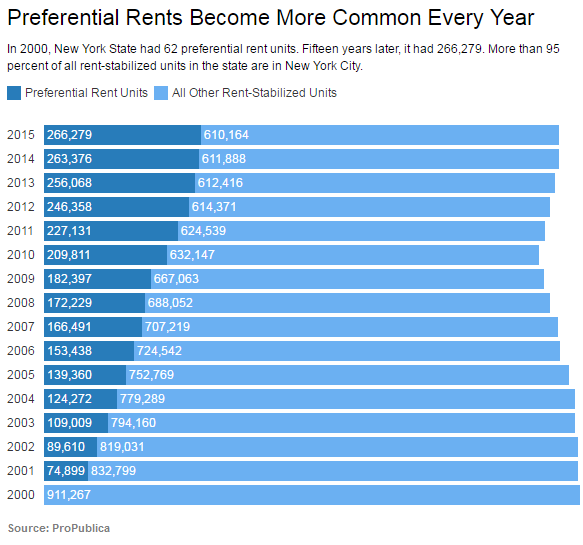
---
If you consider the observations and proposals made in Views from the Northwest Bronx, it seems the answers are fairly straightforward:
- Tougher code enforcement, with less reliance on tenant complaints to identify violations in problem buildings
- Aggressive enforcement of rent laws to ensure that what owners are calling legal rents are in fact legal
- Legislative change to protect tenants against sudden rent increases in preferential rent situations
- Consistent, reliable and sufficient rental subsidies to keep vulnerable low-income families and individuals housed
- Open and inclusive communication with communities about housing and development plans in their communities
- Local planning goals and neighborhood well-being should be considered for new development, not just State or Citywide outcomes
- Solicitation of community development organizations in community development projects in neighborhoods
- Improved lending practices to ensure speculative real estate practices are not being used to justify otherwise unsupported prices of buildings through appraisals and preferential rent levels
- Sufficient funds allocated to programs to allow for placement of different types of housing in different neighborhoods (i.e. supportive housing should be able to be placed in areas other than the Bronx)
- Ensure cluster site buildings are being restored to rent stabilization with fair rents
- Furnish more comprehensive, accessible and accurate datasets from city and state agencies for analysis
In conclusion, we would like to share from Judi Kende’s piece, “City and state leaders must seek to understand the impacts any proposed policy will have on each affected neighborhood and its residents. Involving CBOs in the process is an essential way to bring on-the-ground experience and perspective to decisions that can have major effects on people’s lives. The Bronx is rapidly changing; local needs and priorities must be understood in order to continue the critical work of lifting up residents, keeping longtime community members in their homes, and ensuring the stability of NYC’s diverse neighborhoods.”
While our answers may be straightforward, we are not suggesting they are easy to implement. This is the beginning of a process to share our on-the-ground experience, start discussions, and develop action plans to preserve affordable housing in the northwest Bronx for the people living in the northwest Bronx. To paraphrase the comments of a UNHP board member, instead of making the Bronx Brooklyn, let's make the Bronx the Bronx, - with decent wages for its working families and stable affordable rents.
